Moondram Pirai
4.8 /10 2 Votes
Release date February 19, 1982 (India) | 8.4/10 IMDb Genre Drama, Romance Duration Country India | |||||||||||||||||||||||||||||||||
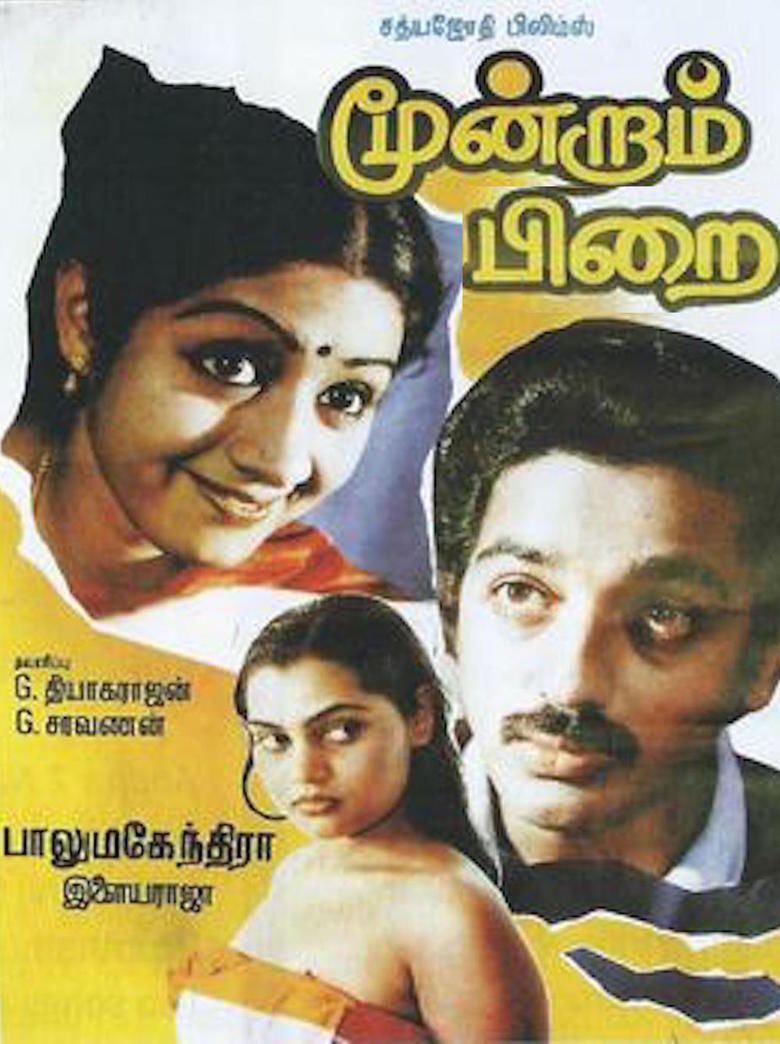 | ||||||||||||||||||||||||||||||||||
Release date 19 February 1982 (1982-02-19) Songs Kannae Kalai Cast (Teacher), Sridevi Kapoor (Lakshmi), (Smitha)), Poornam Viswanathan (Srinivas's Boss) | ||||||||||||||||||||||||||||||||||
Moondram pirai super scene ilayaraja bgm
Moondram Pirai (English: The crescent seen on the third day following new moon day) is a 1982 Indian Tamil-language romantic drama film written, directed and filmed by Balu Mahendra. The film features Kamal Haasan and Sridevi in the lead roles, while Silk Smitha, Poornam Vishwanathan and Y. G. Mahendra play supporting roles. The music for the film was composed by Ilaiyaraaja, with lyrics written by Kannadasan, Vairamuthu and Gangai Amaran. It also featured the last song written by Kannadasan to be recorded before his death in 1981.
Contents
- Moondram pirai super scene ilayaraja bgm
- Plot
- Cast
- Development
- Filming
- Themes and influences
- Music
- Release
- Critical reception
- Legacy
- In popular culture
- References
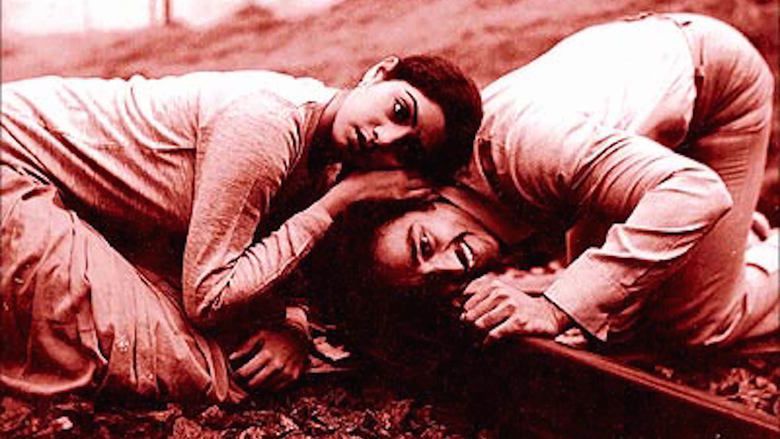
Moondram Pirai is about a school teacher, R. Srinivas, who rescues a woman, Bhagyalakshmi, who is suffering from retrograde amnesia, from a brothel, and protects her in his house located in Ketti. The rest of the film shows how Bhagyalakshmi recovers her memory with Srinivas' help. Moondram Pirai is based on Balu Mahendra's brief relationship with actress Shoba, who died in 1980, shortly after their marriage. It was shot in Ketti, a small town situated close to Ooty, with further shooting also taking place in Bangalore. A total of 30 days was taken to complete the filming, using 36,000 feet of film negative.
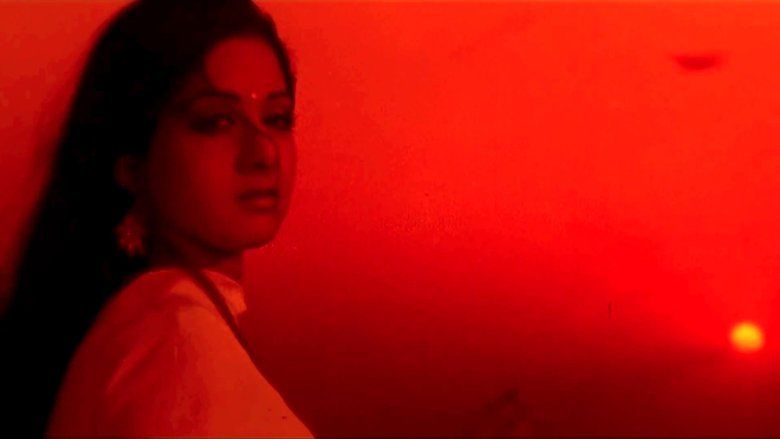
Moondram Pirai was released on 19 February 1982 to positive critical reception. It was a box office success and had a theatrical Run of 329 days. The film won two National Film Awards: Best Actor for Haasan, and Best Cinematography for Mahendra. It also won the Best Director Award for Mahendra at the Filmfare Awards, and five Tamil Nadu State Film Awards, including Best Film (third prize), Best Actor (Haasan) and Best Actress (Sridevi). The film was dubbed in Telugu under the title Vasantha Kokila. Mahendra remade the film in Hindi as Sadma, with Haasan, Sridevi and Smita reprising their roles from the original version.
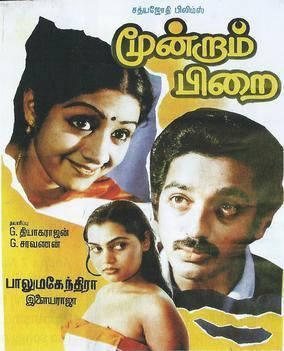
Plot

Bhagyalakshmi, a young woman, has a car accident while returning from a party and is hospitalised with severe head injuries. When she recovers, she is diagnosed with retrograde amnesia and she fails to recognise her own parents. She mentally regresses to the state of a child. While she is undergoing treatment, she is kidnapped and sold to the madam of a brothel. Srinivas, also known as Cheenu, comes to Chennai to meet his old friend. Together, they visit the brothel to relax. The madam sends Bhagyalakshmi, renamed Vijaya, to his room. Cheenu realises that she is mentally still a child and pities her. He learns that she is from a cultured family, and that she was kidnapped and forced into prostitution.

Cheenu returns the next day and, after paying a huge sum to the madam, takes Vijaya out, supposedly on a pleasure trip. He takes her away to Ketti, where he is working as a school teacher. He takes her to his residence, where he protects her and also pampers her like a child. Viji, as she is called by Cheenu, has completely forgotten her past and becomes very close to him. When Viji accidentally spills ink over Cheenu's documents, angering him, their relationship is threatened, but they reconcile. Later, a local woodcutter named Nataraj lusts for Viji and nearly assaults her, but she manages to save herself. When she tells Cheenu about it, he becomes livid with rage and almost kills Nataraj, but is stopped by his neighbours who were informed of the incident by Viji. Meanwhile, the wife of Cheenu's headmaster is attracted to Cheenu, though he does not reciprocate her feelings.
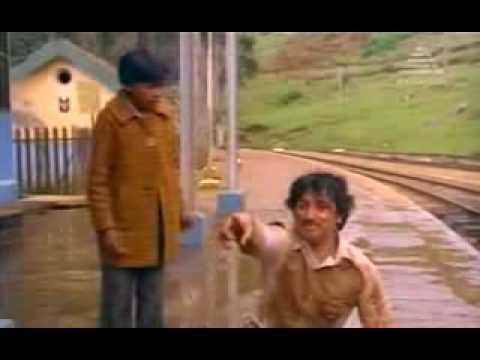
Viji's father Vedachalam, who was searching her through the police, releases a newspaper advertisement about his lost daughter. A co-passenger who had travelled with Cheenu and Viji from Chennai to Ooty by train gives them a lead. Cheenu takes Viji to an Ayurvedic medical practitioner and leaves her there for treatment for a day. In his absence, the police come to his house searching for Viji. Finally, the police learn that Viji is getting treated at the doctor's place and reach there. Cheenu is unable to come as he is afraid of police action. The treatment goes through successfully. Viji regains her memory and completely forgets about the period between her accident and recovery. Vedachalam and his wife are happy and decide to leave. From the doctor, Vedachalam learns that the person who had brought her there had been taking good care of their daughter; he withdraws his police complaint and they begin their journey to Chennai with Viji.
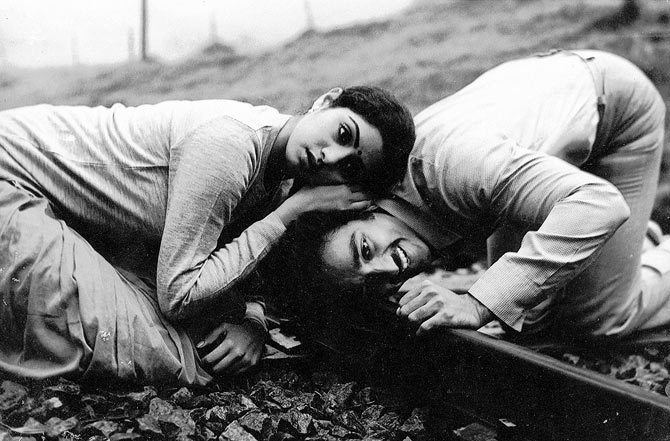
After the police leave, Cheenu comes running after the car in which Viji is travelling. He follows them to the railway station and tries to gain the attention of Viji, but she is unable to recognise him. Cheenu acts like a dancing monkey that Viji developed a liking for, but Viji, unable to comprehend, thinks that he is insane and begging for food. Cheenu continues his futile attempts to gain her attention, and the train eventually leaves with Viji not recognising him. Cheenu, who was injured while chasing her car and trying to get her attention, is left alone, heartbroken.
Cast
Development
Moondram Pirai was produced by G. Thyagarajan and G. Saravanan under their production banner, Sathya Jyothi Films. A. Ramaswamy and D. Vasu were in charge of art direction and editing respectively. In an interview with Anu Hasan on the talk show Koffee with Anu, Balu Mahendra stated that Moondram Pirai was inspired by the suicide of his wife, actress Shoba; she was 17 years old at the time of her death in 1980. According to S. Shiva Kumar of The Hindu, the climax of the film was a clear allusion to how Shoba left Mahendra without warning. In C. B. Rao's review of the film's Hindi version, Sadma (1983), the English translation of the film's title, Moondram Pirai is given as "The Third Generation." The title Moondram Pirai literally means "the crescent seen on the third day following new moon day."
According to Kamal Haasan, when Mahendra narrated the story of Moondram Pirai to him, Haasan listened to Mahendra for about twenty minutes before accepting the role of Cheenu. The role of Bhagyalakshmi was initially offered to Sripriya, who could not accept the role due to her prior commitments, before Sridevi was chosen for it. Poornam Vishwanathan was cast as the school headmaster, while Silk Smitha, who had done around 20 films by then and was considered only for performing item numbers, was cast as the headmaster's sexually excited wife.
Filming
Moondram Pirai was shot in Ketti, a small town situated close to Ooty. Shooting also took place in Bangalore. A total of 30 days was taken to complete the filming on 36,000 feet of film negative. Mahendra did not find hiring a train expensive at that time; as a result, he hired a train for the film's scene where Haasan and Sridevi depart for Ketti, and another train for the film's climax which was shot at the Ketti railway station. Although it was raining on the day the climax was shot, Mahendra decided to continue shooting the scene even though the rain was not part of the film's script. In the post-production phase, Smitha's voice was dubbed by Anuradha. Mahendra supervised Anuradha's dubbing session and taught her the methods to emote the dialogues for Smitha in the film.
While the film was under production the team was scoffed at for making a film about a youth falling in love with an amnesiac, and that the film would not be a box office success. The film uses intense violin music in both its opening and closing credits. In April 2006, Mahendra said that the inclusion of the song "Ponmeni Uruguthey" in the film was "absolutely unnecessary", stating that the sole reason for its inclusion was the presence of Smitha in the song to help promote the film. The final length of the film was 3,917.74 metres (12,853.5 ft).
Themes and influences
Moondram Pirai depicts a young woman whose mental state regresses to that of a child following an accident. Sexuality and the repression of desire are dominant motifs, similar to Balu Mahendra's previous film Moodu Pani (1980). The film also explores the possibility of unresolved sexual tension between the protagonists. Critic K. Jeshi compares Moondram Pirai to other films based on physical and mental disabilities like Sethu... (1999), Pithamagan (2003), Perazhagan (2004), Chandramukhi (2005), Anniyan (2005) and Ghajini (2005). When asked about the reason amnesia was chosen for a disability, Mahendra said the disorder is used as a camouflage and as an excuse to portray relationships in the film.
Film critic Baradwaj Rangan finds the sequence where Haasan's character, Cheenu, narrates the story of The Blue Jackal to Sridevi's character, Bhagyalakshmi, to be a distant echo of the arc negotiated by Cheenu: "He is, after all, a nobody [like the jackal] who, through a salubrious twist of fate, becomes the ruler of a woman's life, until he is restored, at the end, to the nobody he was, a fraudulent claimant to her emotions." In his book Dispatches from the wall corner: A journey through Indian cinema, Rangan says that although Haasan is inspired by Marlon Brando, the scene where Haasan burns himself while cooking and vents his anger on Sridevi, is reminiscent of the acting style of Marcel Marceau. In another book of Rangan, Conversations with Mani Ratnam, he states that in the scene where Cheenu enters Bhagyalakshmi's room in the brothel, there was fumbling and embarrassment, whereas in another Haasan film Nayakan (1987), Haasan's character, Velu Nayakar, behaves as if he has visited a brothel before. Nayakan's director Mani Ratnam replied by saying that the two scenes are very different from one another and that it "can't be played the same way".
Nandini Ramnath, writing for the website Scroll.in, noted that Moondram Pirai contains elements common in Balu Mahendra's other films: "realism, evocative and naturalistic cinematography, strong performances, and psychosexual themes that drive the characters to make unusual and often tragic choices." Hari Narayan of The Hindu compared Moondram Pirai to another Haasan film, Guna (1991). In both narratives, the protagonist’s image of an ideal dreamgirl animate his antics. Cheenu, according to Narayan, "looks like a melange of [John] Keats’ tragedy and [Sigmund] Freud’s psychoanalysis." Narayan explains the idea of Cheenu keeping Bhagyalaskhmi with him not only as an act of sympathy and love, but also with the intention to preserve her like a portrait. Narayan also states that the character, Robert Ledgard's (Antonio Banderas) attraction to Vera Cruz (Elena Anaya) in Pedro Almodóvar's Spanish film The Skin I Live In (2011), is similar to Cheenu's attraction to Bhagyalakshmi. When Bhagyalakshmi recovers her memory and forgets him, Cheenu is hesitant to come back to his quiet existence, realising that in reality, dreams feel like its antithesis.
Music
The music of the film was composed by Ilaiyaraaja. The soundtrack was released through the record label Agi Music. The number "Kannae Kalaimane", which is based on the Kapi raga, and has shades of the raga Natabhairavi, was written by Kannadasan in "about two minutes" time, after listening to the film's story and the situation for the song. Kannadasan was present at the recording session of the song, which took place in September 1981. It was the last recorded song which Kannadasan wrote before his death in October 1981. "Poongatru" was based on the Sindhu Bhairavi raga.
The soundtrack received positive critical reception. "Ponmeni Uruguthey" that was picturised on Haasan and Smitha developed cult status. Hari Narayan of The Hindu said, "The lullaby "Kanne Kalaimane" sees the tranquillity reach a crescendo." Another critic from The Hindu, Shankar, called "Vaanengum Thanga" a "dream song". On the song, "Kanne Kalaimane", Balu Mahendra said that it "stirs you to this day".
Release
Moondram Pirai was given an "A" (adults only) certificate by the Central Board of Film Certification. According to Anand Mathew of The Quint, this was done so because of Smitha who "saunters into the film now and then striking Khajuraho inspired poses with Kamal."
The film was released on 19 February 1982. It was a box office success and had a theatrical run of 329 days. According to its production company, Sathya Jyothi Films, Moondram Pirai received its highest distributor share in Chennai and Coimbatore. The film was also screened at FILCA, a Film Festival held at Thiruvananthapuram in September 2014. Moondram Pirai was dubbed into Telugu under the title Vasantha Kokila. The Hindi remake Sadma was released in 1983, with Mahendra again directing while Haasan, Sridevi and Smitha reprised their roles.
Critical reception
Moondram Pirai received critical acclaim. Ananda Vikatan, in its original review of the film, dated 7 March 1982, praised the performances of Haasan and Sridevi, Ilaiyaraaja's background score and songs and the photography by Balu Mahendra, and gave the film 53 marks out of 100.
Writing for The Hindu, Baradwaj Rangan called Moondram Pirai "The apotheosis of [Balu Mahendra's] art", while also opining that the film was "a superb example of how the presence of a commercially viable plot and the participation of commercially viable actors and technicians can result in art." Also from The Hindu, Hari Narayan called the film "a melange of Keats’ tragedy and Freud’s psychoanalysis" Malathi Rangarajan found Haasan's performance in the climax scene at the railway station to be "sterling".
Rediff considered the film to be a "beautiful and tragic love story". In February 2013, Kaanchan Prashanth, writing for the magazine Galatta Cinema said, "Balumahendra’s Moondram Pirai is a tragedy nevertheless, and that too one that had most of us bawling our eyes out." He further stated that the scenes featuring the lead pair were "beautifully presented", and concluded that "Sridevi and Kamal just outdid themselves in this one."
In contrast, the magazine Aside called the film "a neon moon" and said, "There was at one time a brooding, premonitory quality about Balu Mahendra's movies ... but (he) has now gone into the trade of picture postcards and pani puri." And after a brief word of praise for Haasan's performance in the climax ("darkly luminescent, like a rain drenched monsoon night") added, "Kamal makes a very amusing monkey, but should he not rather be playing a human character?"
Legacy
Moondram Pirai attained cult status in Tamil cinema and was praised for bringing out human emotions, unconditional love and sacrifice. The film had a significant impact among the audience for its style of filmmaking, performances of the lead cast and for Ilaiyaraaja's music. The climax scene where Haasan's character, Cheenu, runs after Sridevi's character, Bhagyalakshmi, who has recovered her memory but forgets the incidents that occur between her accident and recovery completely, and Cheenu trying desperately to make Bhagyalakshmi remember the time he spend with him, to no effect, became popular and was parodied many times. The dialogue told by Smitha's character to Cheenu, "You haave a verrry strrong physique, you know", also attained popularity. A. P. Thiruvadi, in his obituary of Balu Mahendra, called him "The Moondram Pirai of Indian cinema". Moondram Pirai is also the name of a drama written by Tamil poet Puviarasu. When S. Shiva Kumar of The Hindu suggested to Balu Mahendra that the film's ending lacked logic, Mahendra said, "Believe me there’s no logic in life."
In March 2005, Sneha, in an interview with Rediff, listed Moondram Pirai among her favourite films. In July 2007, S. R. Ashok Kumar of The Hindu asked eight Tamil film directors to list their all-time favourite Tamil films; two of them – Mani Ratnam and Ameer – named Moondram Pirai. In September 2009, singer Harini, in an interview with The Hindu, said that her favourite song is "Kanne Kalaimane". In February 2010, director R. Balki, in an interview with Forbes India, called Moondram Pirai as his favourite film. In October 2010, actor Vijay said he prefers to watch films like Moondram Pirai and Mahanadi (1994). In February 2015, Moondram Pirai topped Indumathy Sukanya of The New Indian Express' list of "Top 5 Tamil Romances".
In July 2011, Janani Iyer said she considered a role like Sridevi's character, Bhagyalakshmi, as "really challenging." In March 2013, S. Shiva Kumar of The Hindu compared the climax of Sethu... (1999) to the climax in Moondram Pirai. In November 2013, S. Saraswathi of Rediff included Moondram Pirai in her list of the "10 best Films of Kamal Haasan". In February 2014, Arundhati said she "would love to play a role like Sridevi’s in Moondram Pirai". Sridevi's performance in the film was included in The Times of India's 2015 list, "Sridevi: 5 times the actress bowled us with her performance". Although no print of Moondram Pirai has survived, the film is still available on home video. Balki mentioned in an April 2016 interview with Indo-Asian News Service, that Moondram Pirai "tremendously influenced" him as a filmmaker. Writer K. V. Vijayendra Prasad stated that he got the idea to write the story of the Telugu film Simhadri (2003) while watching Moondram Pirai.
In popular culture
Balu Mahendra's Telugu film Nireekshana (1982) was dubbed and released in Tamil as Kanne Kalaimane. In Pasamulla Pandiyare (1997), Vadivelu and Senthil see Kovai Sarala, who suffers from retrograde amnesia, aboard a bus bound for another town. They try to remind her of the time each of them spent together, but to no avail as she no longer remembers them. This leaves the two of them heartbroken and they sing the song "Aval Paranthu Ponale" from Paar Magaley Paar (1963) to express their sadness.
In Manadhai Thirudivittai (2001), Valayapathi (Vivek) pretends to have lost both his hands. His lover then promises to take care of him. The song "Kanne Kalaimane" is heard as the background music for the scene. In a comedy scene from Run (2002), Mohan (Vivek) imitates Haasan's mannerisms from the climax scene in Moondram Pirai to make his friend Shiva (R. Madhavan) recognise him but fails. In a similar scene from the Malayalam film Kochi Rajavu (2005), Harisree Ashokan's character uses the same mannerisms to make Dileep's character recognise him.
Malathi Rangarajan, in her review of Deiva Thirumagal (2011) said, "Probably because the scene of action is Ooty, the main character is mentally challenged, and the story-telling sequence with Vikram and the kid is familiar, at times [Deiva Thirumagal] reminds you of Balu Mahendra's inimitable Moondraam Pirai." Baradwaj Rangan compares a scene in Barfi! (2012), where Barfi (Ranbir Kapoor) goes after Shruti (Ileana D'Cruz) and stumbles, to that of Moondram Pirai's climax scene. Balu Mahendra's defunct blog is also titled Moondram Pirai..., named after the film.
References
Moondram Pirai WikipediaMoondram Pirai IMDb Moondram Pirai themoviedb.org
